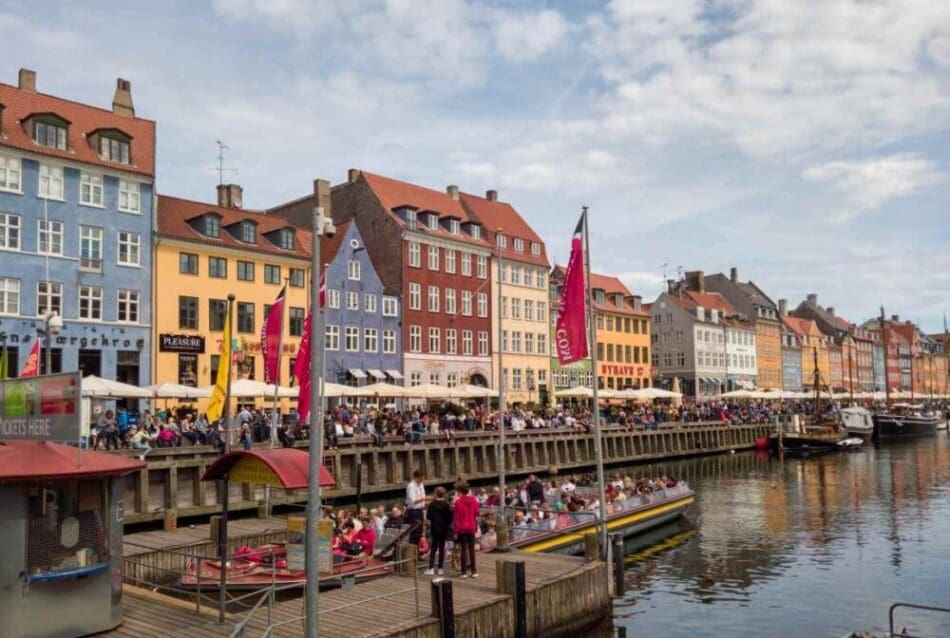By Emma CHARLTON with Camille BAS-WOHLERT in Copenhagen | AFP
Brussels, Belgium – Greenhouse gas emissions in the EU fell by eight percent in 2023 — among the biggest drops in decades — new data showed Thursday, though the bloc remains in a race against time to meet its ambitious climate goals.
The European Environment Agency (EEA) attributed the year-on-year decline to a surge in renewable energy use in the 27-country bloc — the world’s fourth biggest emitter after India, China and the United States.
“The huge drop was led by a significant decline in coal use and growth of renewable energy sources and supported by reduced energy consumption across Europe,” an EEA statement said.
The European Commission described it as “the largest annual drop in decades, with the exception of 2020 when Covid-19 led to emission cuts of 9.8 percent”.
Net greenhouse gas emissions in the European Union last year were at 37 percent below 1990 levels, even though GDP grew by 68 percent over the same period, the EU executive underlined.
It said the data was evidence of the “continued decoupling of emissions and economic growth” in the bloc.
The commission — which has spearheaded the EU’s ambitious push towards carbon neutrality — said the bloc “remains on track to reach its commitment to reduce emissions by at least 55 percent by 2030.”
The EEA also judged that the 2030 target was “within reach” but cautioned that “EU member states will need to sustain this rate of progress to achieve Europe’s climate and energy targets.”
Bucking the downward trend, emissions from the aviation sector grew last year by 9.5 percent, continuing their post-Covid trend.
But emissions from electricity production and heating fell by 24 percent compared to 2022, driven by the growth of renewables, in particular wind and solar, and the “transition away from coal,” the commission said.
Renewable energy was the leading source for electricity generation in the EU in 2023 at 44.7 percent (up from 41.2 percent in 2022), ahead of fossil fuels at 32.5 percent and nuclear power at 22.8 percent.
When it comes to the bloc’s overall energy consumption, the share of renewables grew from 10.2 percent in 2005 to 24 percent in 2023, according to the EEA.
– Swift pace ‘essential’ –
The EU has set a goal of becoming carbon neutral by 2050, with this week’s deadly floods in Spain just the latest of a string of extreme weather events in the bloc aggravated by climate change.
Of the world’s four largest greenhouse gas emitters the EU has made by far the most progress in slashing emissions.
A report released last week by the UN Environment Programme calculated that EU emissions fell 7.5 percent last year — compared to a 1.4-percent drop in the United States, and a jump of 5.2 and 6.1 percent respectively in China and India.
One of the first tasks for EU chief Ursula von der Leyen’s incoming commission will be to negotiate with member states and parliament on an interim target for 2040 — with Brussels aiming to cut emissions by 90 percent compared to 1990 levels.
The centre-right European People’s Party — the parliament’s biggest group, to which von der Leyen belongs — has already said it considers that target “extremely ambitious”.
More broadly, right-wing parties that made gains in bloc-wide elections this year have led the charge against what they call “punitive” environmental policies — fuelling fears that Brussels may be forced to roll back its climate ambitions.
Yet the EEA report made clear that more — not less — was needed to keep the bloc on track.
Based on the measures currently in place in member states, the EEA said projections pointed to a 43 percent net emissions reduction by 2030 compared to 1990 — still well short of the 55-percent target.
It said 22 states had submitted additional projections that include “planned but not yet launched measures” that when factored in would cut emissions by 49 percent within the same timeframe.
“To close the remaining gap by 2030, it is essential that emissions reductions continue at a swift pace over the coming years,” the agency said.
cbw-ec/raz/rlp
© Agence France-Presse
Featured image credit: wirestock | Freepik




